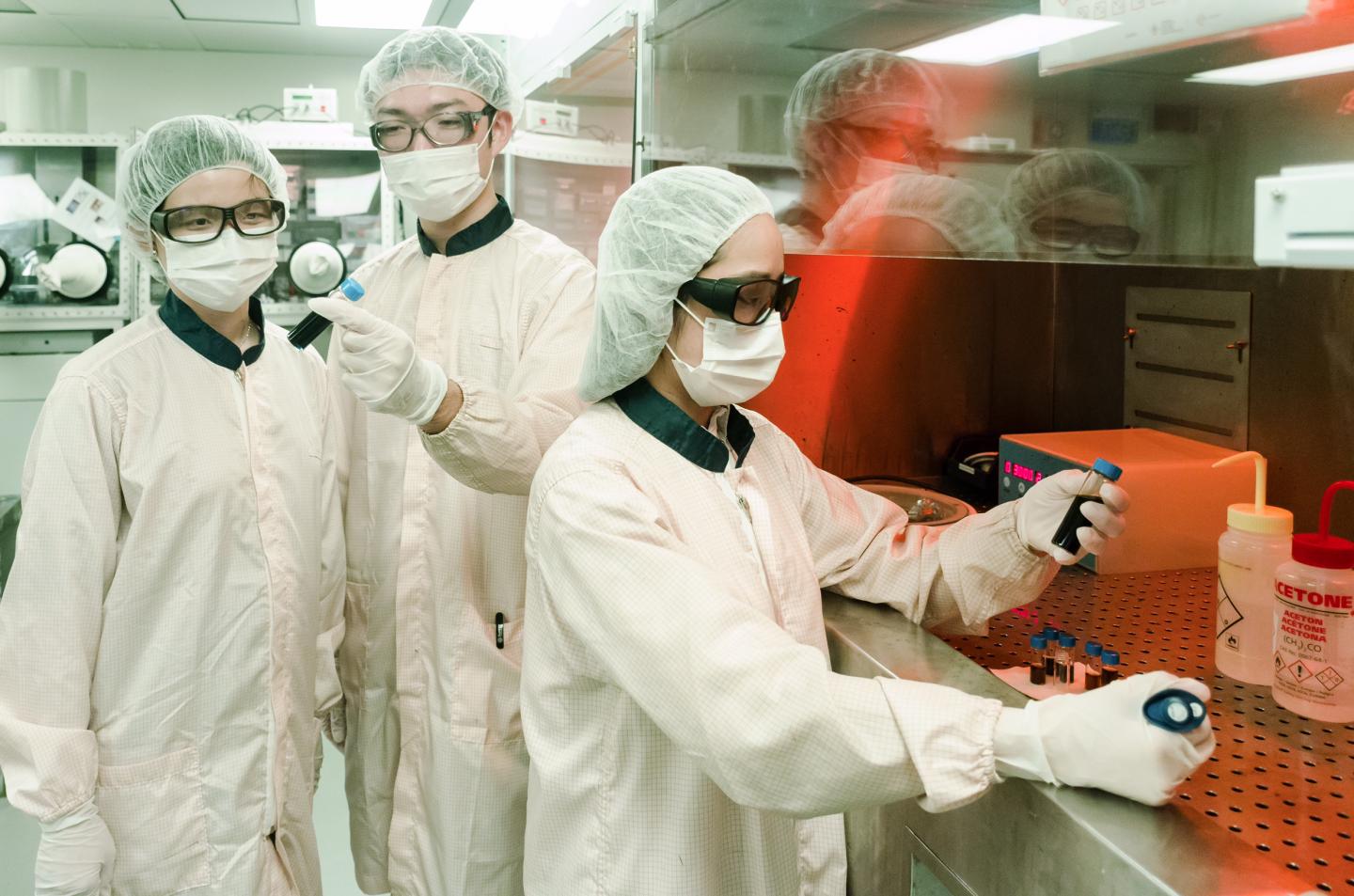Semiconductors, the very basic components of electronic devices, have improved our lives in many ways. They can be found in lighting, displays, solar modules and microprocessors that are installed in almost all modern day devices, from mobile phones, and cars, to the emerging Internet of Things.
To innovate devices with better functionality and energy efficiency, researchers are constantly looking for better ways to make them, in particular from earth-abundant materials using eco-friendly processes. Plastic or organic electronics, which is made from organic carbon-based semiconductors, is one such group of technologies that can potentially provide flexible, light-weight, large-area and additively-manufactured devices, which are attractive for some types of applications.

Dr. Png Rui-Qi (left), Mervin Ang (middle) and Cindy Tang (right) working on conducting polymers that can provide unprecedented ohmic contacts for better performance in a wide range of organic semiconductor devices. (Credit: Seah Zong Long)
To make high-performance devices, good ohmic contacts with low electrical resistances are required to allow the maximum current to flow both ways between the electrode and the semiconductor layers. Recently, a team of scientists from the National University of Singapore (NUS) has successfully developed conducting polymer films that can provide unprecedented ohmic contacts to give superior performance in plastic electronics, including organic light-emitting diodes, solar cells and transistors.
The research findings have been recently published in the journal Nature.
The researchers discovered how to design polymer films with the desired extreme work functions needed to generally make ohmic contacts. Work function is the minimum amount of energy needed to liberate an electron from the film surface into vacuum. The researchers showed that work functions as high as 5.8 electron-volts and as low as 3.0 electron-volts can now be attained for films that can be processed from solutions at low cost.
“To design such materials, we developed the concept of doped conducting polymers with bonded ionic groups, in which the doped mobile charges – electrons and holes – cannot dissipate away because their counter-balancing ions are chemically bonded,” explains Dr Png Rui-Qi, a senior research fellow from the Department of Physics at the NUS Faculty of Science, who led the device research team. “As a result, these conducting polymers can remain stable despite their extreme work functions and provide the desired ohmic contacts.”
This breakthrough is the result of a collaboration with the materials chemistry team led by Associate Professor Chua Lay-Lay from the Department of Chemistry at the NUS Faculty of Science, the physics team led by Associate Professor Peter Ho from the Department of Physics from the same faculty, and scientists from Cambridge Display Technology Ltd, a subsidiary of Sumitomo Chemical Co., Ltd.
“The lack of a general approach to make ohmic contacts has been a key bottleneck in flexible electronics. Our work overcomes this challenge to open a path to better performance in a wide range of organic semiconductor devices,” explains Dr Png Rui-Qi. “We are particularly thrilled about this Singapore-led innovation,” she adds.
Commenting on the significance of the work, Assoc Prof Chua says, “The close partnership of the chemists and physicists has made this innovation possible. We are now working with our industrial partner to further develop this technology.”


